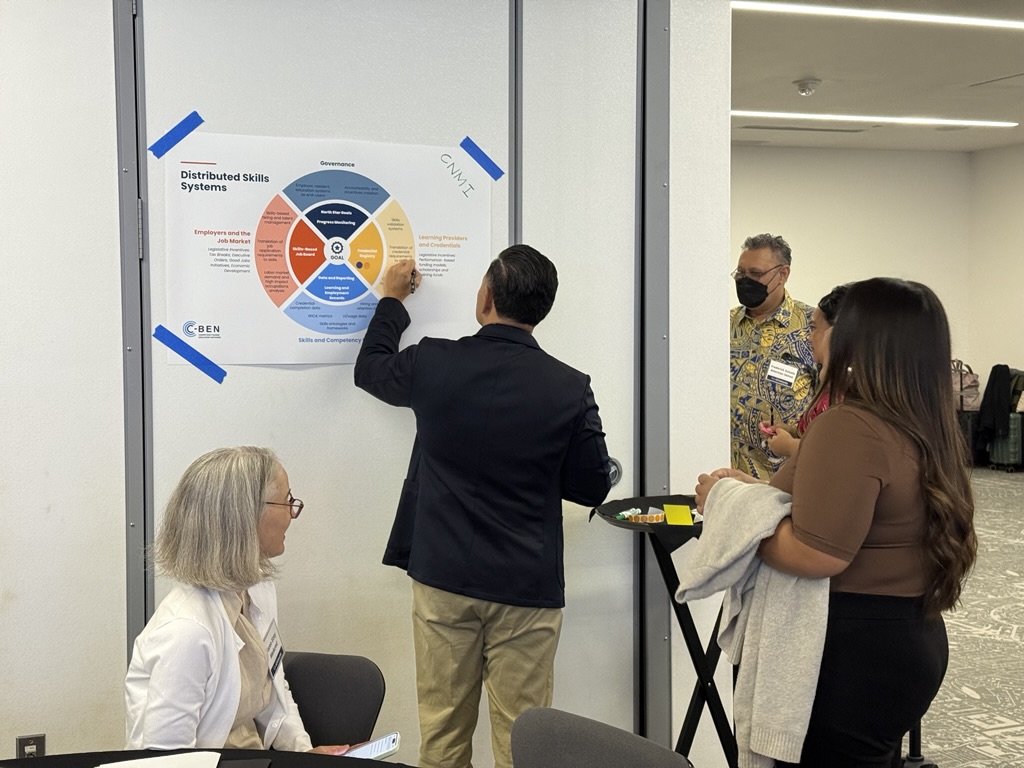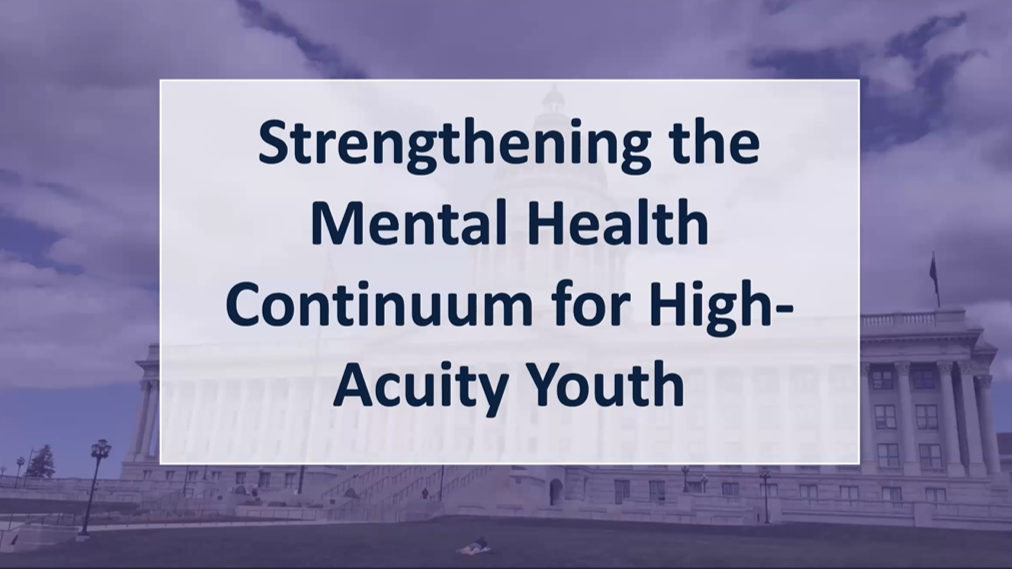Chairman Landrieu, Ranking Member Graham and distinguished members of the Committee, on behalf of the nation’s governors, thank you for the opportunity to testify today regarding the state role in meeting the health care needs of children during disasters. My name is Matt Salo and I am the Director of the Health and Human Services Committee at the National Governors Association (NGA).
State Role in Ensuring Public Safety and Well-Being
While there is nothing that states can do to completely prevent major events such as public health emergencies, natural disasters, and terrorist attacks, there is much we can do to ensure that we are prepared to deal with them should they arrive. One of the key functions of state and local governments is to maximize our ability to prepare for, react appropriately to, and recover from any type of disaster.
We appreciate the clarity achieved by the National Commission on Children and Disasters when they categorized the key issues relevant to supporting our children during such emergencies: health, child care, child welfare, education, housing and shelter, transportation, juvenile justice, evacuation, and emergency management). Governors take these issues very seriously, and states have strong traditional roles in these areas, particularly for children. Today, I will discuss the state role (through Medicaid and the State Children’s Health Insurance Program) in ensuring the health of children during these emergencies.
It is clear that states and the federal government must both do more to plan and prepare for catastrophic disasters, and that the unique needs of children must be emphasized. Although they are not just little adults, they are part of families, and preparedness must recognize that their protection and well being is achieved in the context of their family unit.
The Role of Medicaid and SCHIP
Medicaid is the state-federal partnership program that provides health and long-term care services to millions of low-income pregnant women, children, individuals with disabilities, and seniors. It has a long history of providing important services to those who cannot obtain care from any other source. As such, it must be functional and provide reliable and sustained service during and after an emergency.
The Congressional Budget Office recently estimated that the Medicaid program provided services to over 68 million individuals at some point in time in 2009, and as a result, Medicaid now consumes 21 percent of the average state budget. Medicaid spending has continued to rise as a result of increased caseloads and increases in costs per beneficiary, and total costs in the program are projected to increase an average of 8 percent per year for the next decade.
Although governed by a common set of federal minimum standards, the Medicaid program was designed with enough state flexibility that the programs in each of the states and territories operate quite differently with respect to who is covered, what benefits are provided (and how they are delivered), and how providers are reimbursed.
The State Children’s Health Insurance Program (SCHIP) was created by the Balanced Budget Act of 1997 and provides states with the option of providing health insurance (either through Medicaid, or through a stand-alone program designed to look more like private insurance) to children in families who earn too much to qualify for Medicaid. While Medicaid covers far more children than SCHIP, they are both vitally important in the nation’s health care safety net.
Governors have worked well with The U.S. Department of Health and Human Services (HHS) over the years to help ensure that Medicaid and SCHIP’s role as critical components of the safety net is not jeopardized during disasters (natural or otherwise). The experiences of New York City in the aftermath of the September 11, 2001 terrorist attacks, and those of states and counties hit hardest by hurricanes, floods and other natural disasters bear out this testament to a solid foundation, but also highlight areas that clearly need focused attention.
Hurricanes Katrina and Rita
The devastation that was wrought in the aftermath of Hurricanes Katrina and Rita was tragic, and of a magnitude that few could have predicted. The entire governmental infrastructure was reduced to rubble in large swaths of the affected states, and in the hours immediately following the disaster, the crisis reactions were not always effective or sufficient. The shock that the hurricane winds and subsequent flooding delivered to the area’s health care and safety net systems was equally catastrophic. In light of that, states fully acknowledge that mistakes were made and the system did not operate as well as we may have hoped.
But the entire story cannot be told based on the first few hours immediately post-impact. Once the initial brunt had been withstood, it became much clearer what needed to be done, and where the flaws in the nation’s health care preparedness system were. On a positive note, the outpouring of generosity from state and local governments, and from individual citizens, from areas both near and far was as heartwarming as the disaster was heart wrenching. The host states were so proactive, that they assumed a considerable risk by providing services to displaced individuals well before any waivers were approved, in an effort to sustain continuity of care.
Beginning the next day after the largest and fastest mass human migration in this country’s history, Governors and state Medicaid Directors in the Southern region were working together on a constant basis to ensure the transitions occurred as smoothly as possible. In the states most directly impacted by Katrina and Rita, Medicaid eligibility employees were working seven days a week taking Medicaid applications while simultaneously negotiating with CMS on how to process them. Armed with laptop computers and wireless internet cards, and working either out of FEMA tents, or directly in the hundreds of shelters that had been established, they worked to complete Medicaid and SCHIP applications, immediately enrolling kids into the programs and updating mailing addresses.
Providers in the host states were granted expedited enrollment in the respective home state Medicaid programs so that displaced beneficiaries could quickly and effectively access services across state lines and those providers could get paid for their services. Louisiana’s Department of Health and Hospitals expedited Medicaid enrollment for over 7,500 out of state providers in all 50 states to ensure the continued provision of health care services to evacuated and displaced Louisiana residents. Out of state providers, especially hospitals, showed a great willingness to take on patients in need of inpatient care, and worked closely with the home states to facilitate care and payment for those services provided.
The affected states were also able to put into place provisions that suspended Medicaid’s prior authorization requirements for services such as inpatient hospitalizations and removed timely filing requirements to ensure that preventive screenings were available with fewer barriers for out of state children.
Resolving issues between states whose Medicaid programs function quite differently can indeed be a challenge, as providers may be paid different amounts for the evacuees than for their normal patients, and may be required to charge different levels of cost sharing. There were even concerns about the perception of fairness in states that operate capped waiver programs who opened their doors unconditionally to new beneficiaries, while current residents looked on in frustration.
In addition to the many short term emergencies that were addressed, there were also ongoing and long term challenges such as ensuring the health and safety requirements for enrollees in home and community based waiver programs, and ensuring prolonged access to those providers willing to enroll and participate in the host state’s Medicaid program.
While these were challenges, they were not insurmountable, and states were able to pick up the shattered pieces of the safety net and quickly rebuild. We can and should learn from these experiences. The following are some recommendations based on those experiences. Governors from affected states have provided us the following guidance, that I now pass on to you as lessons learned to help ensure that we – states and the federal government in partnership – provide for children during emergencies with minimal disruption.
Recommendations
Funding
There is clearly an important ongoing federal role in helping states plan for and respond to disasters. While every state that was affected (and every state was) stepped up to the plate to ensure constant communication and coordination, it was the promise of time-limited but full federal funding for impacted populations that made a critical difference. CMS’s response was timely and crucial, but it was Congressional action that provided 100% federal match for Medicaid and for uncompensated care services provided to non-Medicaid populations that made the biggest difference in ensuring their continuity of care.
The neighboring states like Texas and Arkansas could not have been expected to pay the full cost of this enormous influx of evacuees, often with complex, expensive medical conditions. Just as importantly, with much of its tax base crippled, the states of Louisiana and Mississippi were in no position to pay for the ongoing care of its citizens who were forced to leave. The current federal rules and regulations regarding state residence simply do not envision the possibility of indefinite or multi-year evacuations. The federal government’s promise of funding through the Medicaid program and the uncompensated care pools was critical, but it took time to develop this federal legislation. Should there be similar events that warrant an equivalent response in the future, these funding mechanisms can serve as a model for activating a simple, effective, more immediate response.
Health Information Exchange
Despite the efforts of the states involved and the federal government, we know that not everything worked to perfection. No amount of hands-on coordination could ensure that patients whose only health records were in metal filing cabinets submerged under six feet of dirty water would be able to quickly and effectively interface with providers hundreds of miles away. Some of the most commonly reported problems had to do with patients’ medication histories. If the only hard copy of which prescription drugs an evacuee was currently taking was destroyed or lost, there was no mechanism in place for any provider to learn that information. In this case, residents were forced to verbally describe the multiple medications they were currently taking, and often had to resort to describing them by how the pills looked.
In fact, in every state we talked to, the top federal recommendations invariably revolved around ensuring interoperable health information exchange and a greater reliance on reliable electronic medical records. Life-critical data must be able to survive a catastrophe and travel with the person to safety, outside of a physical filing cabinet. In fact, the Southern states have been meeting regularly around the current HIE grants to ensure interoperability between systems for situations like this.
This is not an easily achievable task even in perfect conditions, and states are hard at work trying to build the infrastructure to ensure accessibility of information when necessary, while ensuring that appropriate steps are taken to protect patient privacy.
There are examples of approaches that worked. KatrinaHealth.org was an online database of patient pharmaceutical information established by drug stores and pharmacists working together to share data. It enabled, on a limited basis, patients and providers to be able to access some information about their medication history. One of its challenges was that it did not provide access to important information on mental health drugs, for various privacy and security reasons. Unfortunately, we know that this is one of the areas that is MOST critical to patients attempting to recover from the shock of a disaster of this magnitude.
Similarly, Louisiana discovered that its online immunization network for kids, called LINKS, allowed authorized users to access the immunization records for children. This was immediately important as it allowed these children to enroll quickly into schools no matter where they ended up. It was also important to show that broader application and adoption of the technology could be the backbone for ensuring continuity of care despite the hardships otherwise encountered.
While the HITECH Act set in motion a national process to ensure interoperable health information exchange by 2014, we must continue to be vigilant until such time as these networks are operational. Additional funding steered towards providing up front financial incentives for primary care providers to adopt the hardware and software would be an improvement and could make the nation more prepared more quickly than the current trajectory.
Supporting the Existing System of State and Local Response
There are two important themes to remember. First is that health care delivery systems, public health infrastructures and preparedness/planning activities are local by nature. The second is that every disaster is different. Hurricanes that impact multiple states are very different from wildfires or localized floods that primarily impact only one state. Both of these are different from events such as the terrorist attacks of 9/11.
States have now had years of experience conducting so called “table top exercises”, with the assistance of the Department of Homeland Security. Often conducted regionally, they have made states, and the nation more prepared for various contingencies, such as terrorist attacks, potential pandemic outbreaks such as the avian flu, and natural disasters such as floods or hurricanes. This concept has worked and should be continued. These exercises could be expanded to include issues specific to children, such as the interaction of schools and the health care and social services safety nets. However, while the unique needs of children must be addressed in the planning for and response to disasters, it is important to recognize that children are members of families, and we must be careful not to disrupt the family unit.
The ability of states to work together and with their federal partners is the underpinning of a successful disaster response system. With the various templates in place now and the lessons we have learned over the past decade, we are better equipped to handle the fundamentals of most disasters in a more timely manner. Overly prescriptive rules and regulations will only impede this function, and not make our citizens safer or more prepared.
Improving the State-Federal Partnership
The need for federal support to be flexible is highlighted by the fact that the experiences of the various states directly impacted by hurricanes are very different. The Centers for Medicare and Medicaid Services (CMS) worked extremely well with most of the impacted states to develop waivers that could be tailored to the specific needs of both the home and host states, and streamlined to minimize unnecessary bureaucracy. The various templates took into account various scenarios such as 1) people displaced from a disaster area, but still within their home state; 2) people displaced to other states and the host state had to ensure compliance between their providers and the home state’s program; 3) states that saw some residents displaced into neighboring states AND who also were accepting evacuees from other states; and 4) variations on those themes.
Louisiana, however, which saw New Orleans devastated by flooding, and saw the greatest number of citizens evacuated across state lines, was forced to make significant commitments to critical programs and other state Medicaid agencies with no guarantee that sufficient federal assistance would come. In many ways, Louisiana officials were on the vanguard of the response effort and were flying blind with little consistent federal guidance at the onset. Both federal guidance and flexibility in the initial moments of any disaster is critical to fully meet the unique challenges of every disaster and every state’s situation.
In the wake of Hurricanes Katrina and Rita, impacted states took financial risks by temporarily waiving program integrity rules to ensure that people affected by the disasters got immediate access to health care services. It is important that otherwise appropriate bureaucratic safeguards do not jeopardize the provision of emergency health care services, and states should not have to simultaneously focus on protection of their citizens and fear of penalties or disallowances while trying to respond to the disaster. As states make preparedness plans, they need more certainty (either with legislation, or clear regulatory guidance) on the availability of emergency funding and what types of program rules can be waived, and for how long.
Conclusion
Ultimately since disasters cannot be entirely prevented, it is our duty to ensure that we do our best to prepare for the unexpected. This can best be achieved with a renewed partnership between states and the federal government that recognizes the tools states need to ensure the well being of their citizens.
The clearest way that the federal government can help ensure this is through 1) the certainty of adequate funding; 2) continued assistance in the development of interoperable health information exchanges; 3) timely support for states as they prepare for and react to these unfortunate events; and 4) working with states to improve the state-federal partnership.












